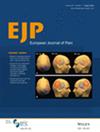Deciphering Pain Experience in Adult Patients With Sickle Cell Disease: A Network Analysis of Pain-Related Factors in a Single French Sickle Cell Centre
Abstract
Background
Sickle cell disease (SCD) is the most prevalent inherited haemoglobinopathy characterised by chronic pain with acute painful episodes due to vaso-occlusion. The effective management of pain by adults with SCD influences their health outcomes. Opioids remain essential for most pain syndromes, but non-pharmacological interventions are preferred for daily pain due to the risk of addiction. However, their effectiveness is variable. Understanding the underlying processes associated with pain is crucial for developing more effective non-pharmacological strategies. This study aimed to enhance comprehension of the pain mechanisms in SCD to identify potential areas of action for effective non-pharmacological interventions.
Method
An evaluation was conducted on the severity and interference of pain, pain-related cognitions and emotions. We used network analysis to simultaneously examine the intricate relationships between these variables.
Results
A pain intensity exceeding 4 at a steady state distinguishes a subgroup at elevated risk of negative pain-related emotions and cognitions. The network analysis revealed intricate interconnections, with three distinct subgroups of variables mimicking the Neuromatrix model (cognitive-evaluative, motivational-affective and sensory-discriminative subgroups). The derived directed acyclic graph suggests potential mechanisms between these three subgroups, with catastrophising having a pivotal role.
Conclusion
This study extends previous research by providing a comprehensive network analysis of pain-related variables in SCD, offering novel insights into the complex interplay between pain experience, cognitions and emotions. These findings have important clinical implications, as they suggest that targeting dysfunctional pain cognitions and/or negative emotions may be beneficial for improving pain management and quality of life in SCD.
Significance Statement
This study was the first to use network analyses to understand simultaneously multiple relationships between variables referring to pain, and pain-related negative emotions and cognitions in adults with SCD. Findings, providing support to the Neuromatrix model, offer novel insight to better understand pain and the associated negative emotions and cognition in SCD. The derived directed acyclic graph explored potential underlying psychological processes associated with pain that could be specifically targeted by future effective psychological interventions.


 求助内容:
求助内容: 应助结果提醒方式:
应助结果提醒方式:


